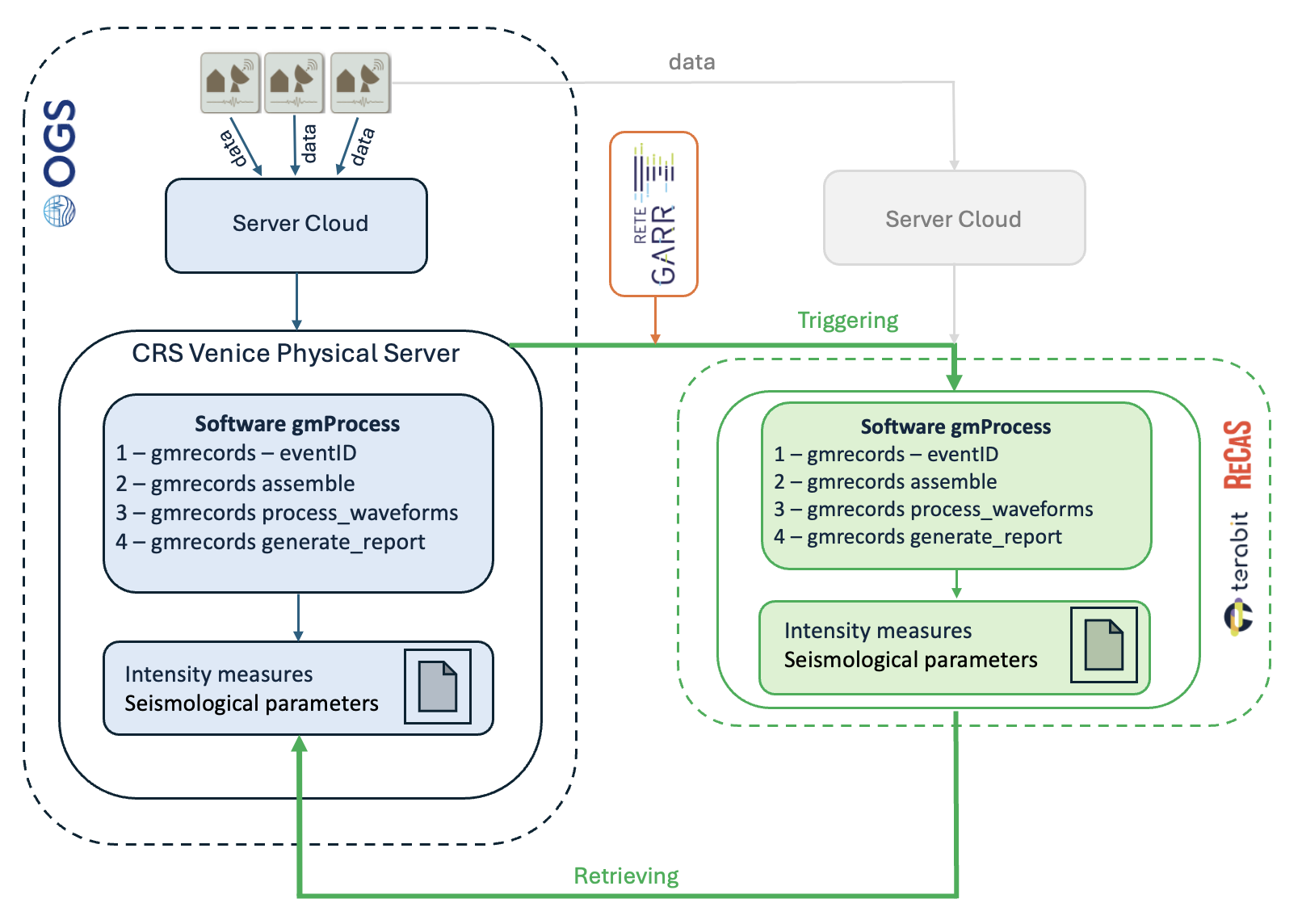Rapid generation of reports on post-seismic events with gmProcess: a case study for a dense accelerometric network in Veneto (NE Italy)
Solid Earth Sciences, Seismology
Research area
In 2022, the National Institute of Oceanography and Experimental Geophysics - OGS established a dense accelerometric network in Veneto (Northeastern Italy) to monitor strong ground shaking from earthquakes. Covering over 50% of the region’s municipalities with 318 sites, it enables rapid damage assessment and efficient rescue coordination. The network employs advanced MEMS accelerometers with a high signal-to-noise ratio, capable of recording earthquakes above magnitude 2.0. It utilizes USGS’s open-source “gmProcess” software to analyze ground motion and generate station reports with parameters like PGA. Given the large waveform volume and need for real-time processing, we leverage the TERABIT HPC infrastructure. This case study explores the benefits of integrating HPC technology into seismic monitoring in Northeastern Italy.
Project goals
The scientific challenge we want to address concerns the acquisition and processing of seismological data from dense accelerometric networks in near real time. Currently, the management of large amounts of real-time seismic data is limited by insufficient computational resources and partially automated workflows. This impairs the efficiency of rapid post-earthquake responses, which are crucial for risk mitigation and emergency management. The aim of the project is to develop an optimized methodology for the automated processing of seismic network data with gmProcess, leveraging the advanced computing capabilities of the Terabit research infrastructure. This will enable the production of high quality, detailed seismological reports in less time, including important parameters such as PGA, PGV and PGD as well as shakemaps. Integration with high-performance computing infrastructures and high-speed transmission networks will improve the scalability and reliability of the system and significantly increase the speed and accuracy of information for operational and scientific decisions.
Computational approach
The main technological challenges concern the management of large amounts of real-time seismic data and the need to automate the processing workflow with gmProcess. Currently, the OGS servers do not have sufficient computational resources to quickly process data from dense accelerometric networks, so it is necessary to use high-performance computing infrastructures such as Terabit. One of the main limitations is the time required to generate detailed seismological reports (PNG/PDF). This could be reduced by using HPC nodes and optimizing the code for parallel computing. In addition, data transmission could benefit from integration into the high-speed GARR network, which would significantly reduce transmission times. Finally, the workflow is not yet fully automated: Each phase (data acquisition, processing, and report generation) requires manual intervention. The implementation of an automated sequential execution system would improve efficiency, reliability and responsiveness to seismic events.
The diagram shows the seismic data processing workflow using gmProcess. Data is collected and sent to the CRS Venice Physical Server via the OGS Server Cloud, where gmProcess processes it in four steps to generate reports. Data is also transmitted through the GARR network to the RECAS Terabit infrastructure, where another instance of gmProcess runs the same steps. This setup ensures redundancy and higher computational performance for faster and more efficient seismic event analysis.
Giorgio Capotosti
Istituto Nazionale di Oceanografia e di Geofisica Sperimentale
Giorgio Capotosti is a technologist at the Seismological Research Center – OGS. He manages accelerometric networks in Veneto, Emilia-Romagna, Friuli Venezia Giulia and Campi Flegrei and uses the USGS software gmProcess software for rapid post-seismic report generation and the calculation of parameters such as PGA and PGV, using the TeRABIT HPC infrastructure. He uses Zabbix and Nagios to monitor the seismic network and writes Python and Bash scripts for data management. He has installed and calibrated AD.EL ASX2000 accelerometers, managed temporary seismic networks, and participated in research projects. He holds a Master’s degree in Geological Sciences and Technologies and has advanced skills in Python, MATLAB, QGIS, Linux servers and OpenVPN. He has presented papers on gmProcess at international conferences and published studies on seismic networks and environmental vibrations.










